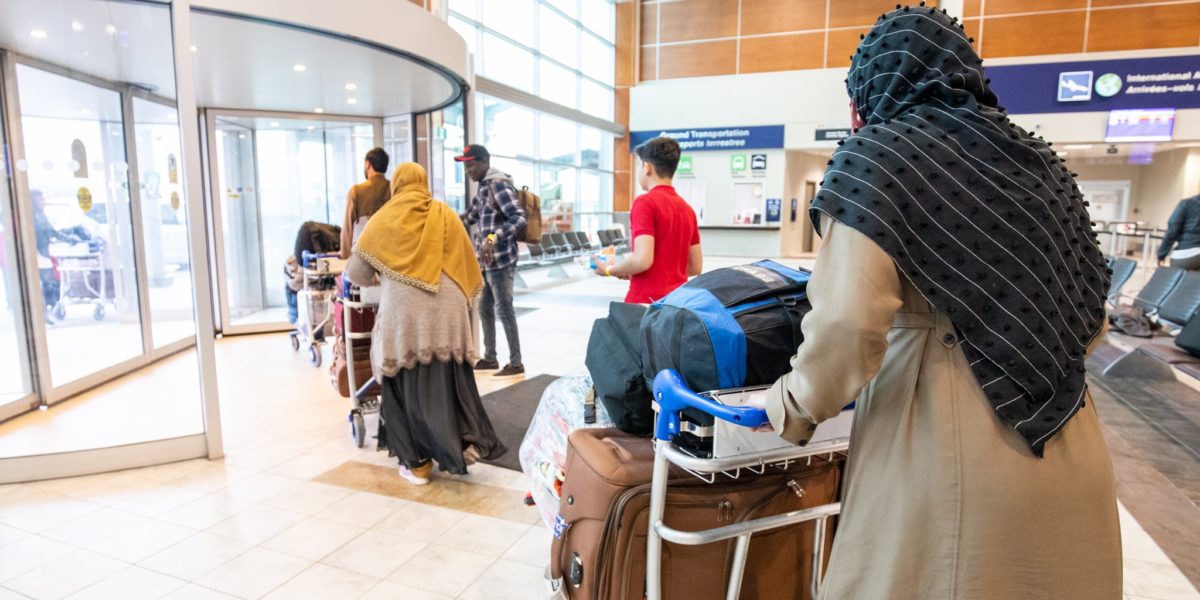Earlier this month, the Government of Canada announced their plan to welcome nearly 1.5 million immigrants to the country by the end of 2025.
While the push to increase immigration rates will help more people build a life in Canada, the red tape required to become a permanent citizen is holding many back.
Two years into the COVID-19 pandemic, the country’s immigration backlog reached a high of 2.7 million applicants.
One woman in Halifax, who fled her war-torn home of Palestine, completed the application process and passed all testing requirements in 2017. Five years later, she’s still waiting for her swearing-in ceremony. In the meantime, she’s not considered a Canadian citizen.
Last week, the Minister of Immigration, Refugees and Citizenship Sean Fraser shared the federal government’s next steps in welcoming more immigrants to Canada by allowing workers from 16 new occupations to become eligible for permanent residence.
The federal government has made clear the decision to welcome an increase in immigrants to Canada is one based on the economy, rather than by urgency and need.
The economic strategy was doubled down in Fraser’s announcement, as he described labour shortages in key sectors like health care, construction and transportation — the same industries where employees are often underpaid, overworked and face serious workers rights issues. After all, there’s a reason Canadians are leaving these sectors in droves.
And what about the prospective immigrants who may not possess the “global talent” skills the federal government deems attractive? Implementing such a rigid and exclusive priority system does not just weed out the people who need refuge most — it also dismisses the idea that these skill sets can be learned upon settling in Canada.
“We are using all of the tools at our disposal to tackle labour shortages, particularly in key sectors like health care, construction, and transportation,” Fraser said last week. “These changes will support Canadians in need of these services, and they will support employers by providing them with a more robust workforce who we can depend on to drive our economy forward into a prosperous future.”
Crunching the backlog numbers
According to data from the federal government’s website, more than one million people are currently waiting for backlogged applications. That’s more than half of the 2.2 million total applications currently being processed.
Sixty per cent of the 1.3 million people seeking temporary residence in Canada are currently backlogged, while 54 per cent of permanent residence applications are also outside of service standards.

When it comes to citizenship, 100,000 people are facing a backlog of their application — leaving their rights as a Canadian citizen in limbo.
While the office of Immigration, Refugees and Citizenships Canada (IRCC) hopes to reduce the backlog with a target of 20 per cent by the end of the year, they only managed to process 1.7 million applications in 2021.
Data shows nearly three out of every four work permit applications are from the Canada-Ukraine authorization for emergency travel, as well as 16 per cent of temporary resident visa applicants.
During a press conference on November 1, Fraser told reporters Canada’s 2023–2025 Immigration Levels Plan “embraces immigration as a strategy to help businesses find workers” in an effort to “manage the social and economic challenges Canada will face in the decades ahead.”
The new plan follows a record year for welcoming newcomers into the country. In 2021, Canada welcomed over 405,000 newcomers. Targets for the coming years include 465,000 permanent residents in 2023, another 485,000 in 2024, and 500,000 in 2025.
How the IRCC plans to achieve Canada’s goals
In an email to the Immigration Minister’s Office, rabble.ca asked for details on current wait times for successful applicants to receive their swearing-in ceremony, and whether a deadline must be met by officials. Their response answered neither of these questions.
Instead, IRCC communications advisor Jeffrey MacDonald stated the government of Canada is “modernizing and increasing its services” by offering “online testing, virtual citizenship ceremonies, and an online application tracker.”
MacDonald noted the government’s plan to accommodate the influx of applicants by hiring up to 1,250 new employees by the end of fall 2022 to reduce application backlogs, with a focus on “addressing labour shortages, improving client experience and reuniting families.”
“Increasing immigration helps address long-standing challenges, such as decreasing worker to retiree ratio, a low fertility rate, and labour shortages, which will continue to affect us even after the side effects of the pandemic subside,” MacDonald wrote.
The IRCC is also set to benefit from an allocation of $1.6 billion over six years, announced on November 3 in the Fall Economic Statement. That’s in addition to $315 million in new funding to help speed up processing times and support the settlement of newcomers, and $50 million to fill critical labour gaps in 2022-23.
According to the IRCC, employees have produced 4.3 million final decisions between January and October 2022, compared to 2.3 million decisions in the same period last year.
The IRCC anticipates it will set a new record for study permit processing in 2022, with 593,000 permits processed as of October 31, compared to 455,000 in 2021. During the same period, the IRCC processed 645,000 work permits, up from 163,000 the previous year.
MacDonald said the IRCC also expects to reach their record-setting target of 431,000 new permanent residence admissions in 2022, with approximately 388,000 new permanent residents already welcomed by the end of October.



